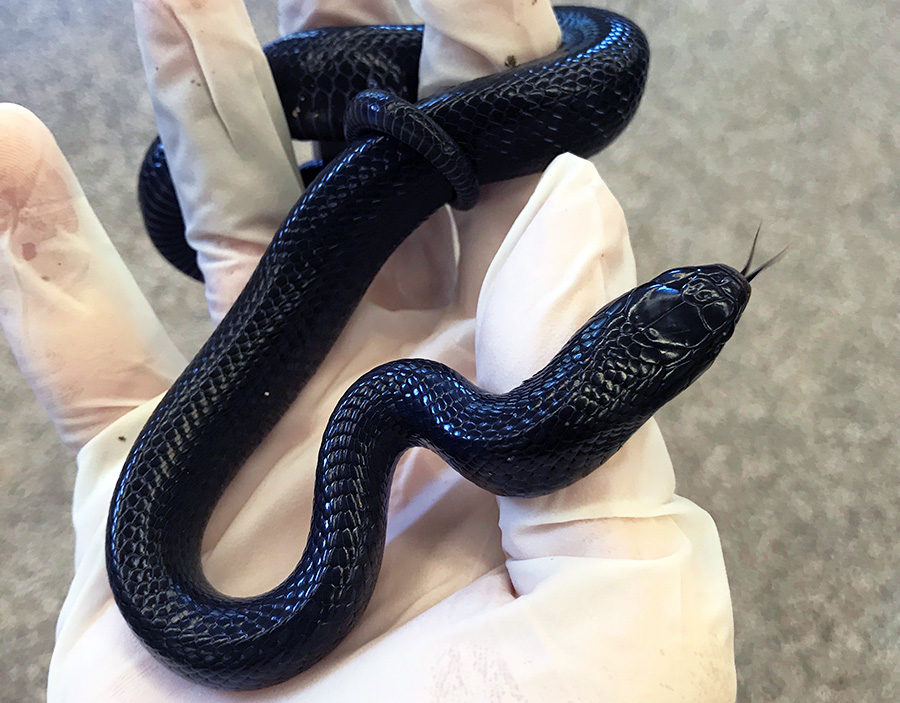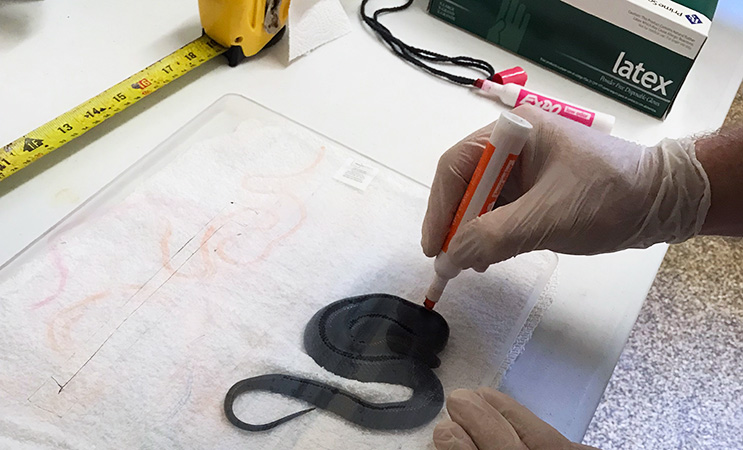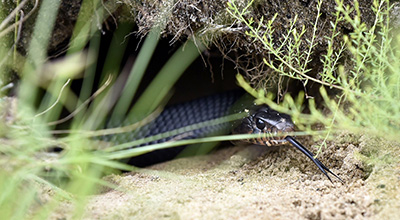
The Eastern indigo snake (Drymarchon couperi) is the largest non-venomous species of snake in North America. It is a vital apex predator and helps maintain balance in its native ecosystems.
Our team of conservation specialists at the Orianne Center for Indigo Conservation have been happily celebrating hatching season. So far, fifteen healthy snakes have hatched—and there are more on the way! It takes around 100 days for eastern indigo snake eggs to incubate, so the team waits (im)patiently to see the results of their breeding efforts. Needless to say, the wait is worth it!
Breeding is a delicate process and each egg is tracked every step of its journey. Towards the end of incubation, the eggs are checked twice a day to see if they’ve started hatching. Once a hatchling fully emerges, an OCIC specialist records its weight, length, and checks for any anomalies. Newborn indigos typically weigh between 40–60 grams and are between 18–21 inches long! 
Hatchlings can vary significantly in appearance from red, white, or black chins to an occasional slight flecking pattern on their scales. They each have their own humid habitat to live in. Once they reach their first shed cycle, they are offered their first meal. Unlike the voracious appetite of adult indigos, hatchlings can be difficult to feed. A lot of time and patience goes into ensuring they eat and start to grow at a natural pace.
All data tracked throughout the breeding process is imperative to Eastern indigo snake research. Our OCIC specialists compare data yearly to find trends in the reproductive and growth cycle to help continuously improve conservation efforts.

In July 2019, the OCIC transferred thirty Eastern indigo snakes bred, hatched, and raised for one year onsite to the Welaka National Fish Hatchery (WNFH). These 2018-hatchlings will be housed and cared for at the WNFH during year two of their lives before being released at a designated reintroduction site. This year’s hatchlings will be cared for in the same manner and released in 2021.
While the Orianne Center for Indigo Conservation is the sole breeding facility for these threatened snakes, it takes the work of several organizations to raise and release healthy individuals into their natural habitat so they can establish wild populations. The OCIC team continues to act as stewards for this imperiled species, not only through their conservation efforts, but through community engagement and education about an often-misunderstood species.